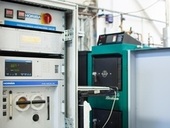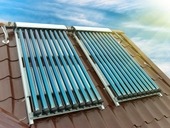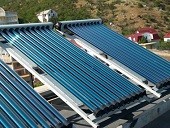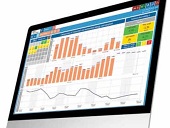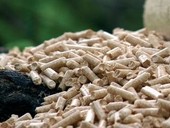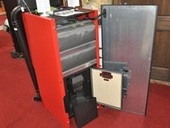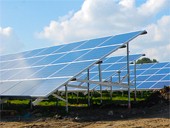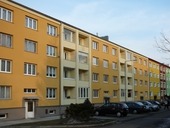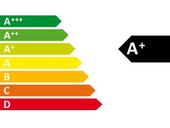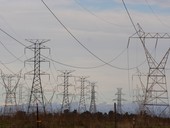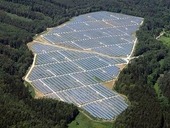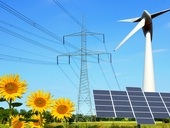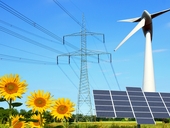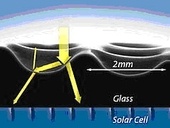Third part of serial focuses on solar system components. The fact, that there is a tendency for undersizing the component to reduce the system price, is expectable. But cases, in which the basic safety guidelines are broken, are just a demonstration of incompetency of installation company not only in the field of solar thermal systems but in the heating branch in general.
Archiv článků od 24.11.2014 do 25.5.2015
In recent months, took place in Berlin and Wels important energy conference that addressed the importance of wood pellets and their role in heating. There were introduced detailed descriptions of world markets with pellets and especially detailed analysis of production and consumption of certified ENplus pellets in the world for the past year. In the following description of the main insights from both conferences that show trends in the pellet industry primarily from the perspective of Europe, which is a defining market for domestic development industry of Czech Republic.
Second part of serial focuses on solar collectors. Basic axioms of solar thermal engineering are lost if designer or installation company wants to supply the a solar system at all „costs“. It is not easy to recognize the quality of solar collector at first sight. But i tis simpler and less expensive to make a cross-check of the solar collector than to replace one after another by new ones because of low heat output.
With an increasing number of installations pellet boilers and stoves in the Czech Republic (at the beginning of 2015 were registered about 21.000 installations of pellet boilers and 6.000 installations of pellet stoves) multiplies a number of service technicians and of course we also meet with different quality of service and installation. For this reason, at the end of 2014, appointed by the Regional Court in Brno, the first judge advocate witness for stoves, fireplaces, boilers and stoves for pellets Mr. Michal Nejezchleb. For the following interview he asked by Mr. Vladimir Stupavský, representing Czech producers and distributors of pellets and biomass boilers.
This year’s ISH fair (Installation, Sanitär, Heizung), held on March 10 to 14, 2015 in Frankfurt, Germany, had a slogan “Comfort meets technology”. It means that the companies aim to supply not only technologically advanced products, but also products with comfortable and easy operation. For systems and components for HVAC controls it means primarily easy-to-understand user interfaces with clean design. It showed primarily at room units, thermostats, and lights and blinds controllers with touchscreens and housings of simple shapes. Regarding system integrators, the point was in making configuration tools easy, and bringing part of the decision-making process to the engineering tools, thus cut down the engineering and commissioning time. Many booths claimed energy savings and energy management, which mostly meant classical SCADA systems and metering data acquisition, as energy management is expert activity, for which the SCADA and communication systems just provide the input data.
Domat Control System backed the hands-on experience this time. Visitors could try engineering and configuration tools at two test desks with both popular controllers (FC010, UC100, IPLC) and news like mark100 to markMX process stations range, programmable in Merbon IDE, the new engineering tool, which supports function blocks (FB) and structured text (ST) as well as compiling of customized function blocks. “Customers like especially support of standard communication protocols, like Modbus, OPC, and BACnet, together with more than 50 system drivers for third party systems, all of this well priced. The Domat components are used not only at homogenous building control systems, but also as a way how to integrate other technologies into third party SCADAs and management systems,” says Michal Šeda, head of product sales department. “With the most active distributors, Vedotech and S+S Regeltechnik, we discussed the market situation and acquired inspiration for further development.” Visitors were also attracted by a new room unit with hi-res colour touchscreen.
Domat Control System s.r.o. is Czech manufacturer of HVAC and energy control systems. The company was established in 2004, starting activities in energy management and control in 2008 by supplies of photovoltaic monitoring systems. About 55 % of the volume in 2013 was export.
Czech Republic is at the beginning of an extensive exchange of unsatisfactory heat sources. On the one hand we have a “straw man” of the Law on Air Protection, on the other hand a helping hand in case of national subsidies. In the following text we show some subsidies for small heating sources in 2015 in the Czech Republic.
The article describes the results of global pellet markets and especially detailed analysis of production and consumption of certified ENplus pellets in the world for the last year. Major trends in the pellet industry are described mainly from the perspective of Europe, which is a defining market for czech market.
PID = Potential Induced Degradation refers to the physical phenomenon that causes seemingly inexplicable reduction in output from photovoltaic panels. Basically, the interlayer polarization leading to irreversible degradation of silicon photovoltaic panels. PID typically begins to appear after 2-4 years of operation, and may cause performance degradation of the solar panel according to the type and location of the panel in the string up to 70 percent. In case of an early solution, PID is reversible. PV module can be depolarize and return them almost original performance.
Text is focused on the energy effectiveness of the heat pump installations operated in the system for space heating and domestic hot water preparation. Conventional heat pumps are operated in hot water system with low coefficient of performance (COP). Heat demand structure in multifamily buildings with high heat use for hot water influences the energy effectiveness of heat pump operation. Moreover, combination with space heating results in high installed heat capacity of the units which is not used during the year.
The ozone layer is essential for life on Earth. It protects the biosphere against excessive doses of UV radiation. Anthropogenic emissions of ozone-depleting CFCs caused a serious problem. Fortunately thanks to the Montreal Protocol and its appendices the ozone layer regenerates today, virtually on a global scale. Restoration of the ozone layer is accelerated by climate change, what in the future could lead to a lack of UV radiation.
The article discusses the Directive 2010/30/EU of the European Parliament and of the Council with regard to the energy labelling of local space heaters (Ecolabelling), which builds on Directive 2009/125/EC of the European Parliament and of the Council with regard to ecodesign requirements for local space heaters. The output will be compulsory energy labels for heating sources. However, the introduction of energy labels accompanying difficulties.
Extended concept of the term electricity storage can greatly increase the possibility of storing electricity from renewable sources at a time when their production exceeds demand. The electricity could be stored not only using conventional technologies which returns electricity (P2P – power-to-power), but in form of heat or gas too (P2H – power-to-heat and P2G – power-to-gas). While conventional technologies P2P and P2H too allow to store energy for several hours or at most days, P2G technology in conjunction with underground natural gas storage has sufficient capacity for seasonal accumulation.
This article tries to summarize the available information about photovoltaic power plants operated in the Czech Republic. Apart from describing the current situation, it is therefore concerned with comparisons between photovoltaics and other kinds of RES; the photovoltaic production according to region; the distribution of power production according to size of the installations; legal personality of the operators and international comparisons.
Concept Data Support Department of the Ministry of Industry and Trade has prepared this statistical report as a comprehensive national statistics on renewable energy sources. The report focuses on the share of RES in the energy balance of the Czech Republic and describes in detail the development of the each RES categories, which are: biomass, biogas, liquid biofuels, solar, wind and water energy, heat pumps and renewable part of industrial and municipal waste. There is a description of methodology regarding data collection and consequent analysis at the beginning of each section (chapter) of the report. Data included in the report are fully comparable (compatible) with data which are reported on regular basis to International Energy Agency and Eurostat.
Concept Data Support Department of the Ministry of Industry and Trade has prepared this statistical report as a comprehensive national statistics on renewable energy sources. The report focuses on the share of RES in the energy balance of the Czech Republic and describes in detail the development of the each RES categories, which are: biomass, biogas, liquid biofuels, solar, wind and water energy, heat pumps and renewable part of industrial and municipal waste. There is a description of methodology regarding data collection and consequent analysis at the beginning of each section (chapter) of the report. Data included in the report are fully comparable (compatible) with data which are reported on regular basis to International Energy Agency and Eurostat.
Concept Data Support Department of the Ministry of Industry and Trade has prepared this statistical report as a comprehensive national statistics on renewable energy sources. The report focuses on the share of RES in the energy balance of the Czech Republic and describes in detail the development of the each RES categories, which are: biomass, biogas, liquid biofuels, solar, wind and water energy, heat pumps and renewable part of industrial and municipal waste. There is a description of methodology regarding data collection and consequent analysis at the beginning of each section (chapter) of the report. Data included in the report are fully comparable (compatible) with data which are reported on regular basis to International Energy Agency and Eurostat.
The goal of this paper was to inform about the development of the building integrated photovoltaic thermal (PV-T) system and evaluate its performance in compared to PV installation built of same photovoltaic cells. The study was collaboration among the Technical University of Denmark (DTU and Danish company RAcell (end-reference to website). This project was applied and optimized with the coupled house system on FOLD house, built in purpose of international student competition Solar Decathlon Europe 2012 held in Madrid in September 2012. The proposed PVT system was awarded with first price in Solar system integration sub-contest, during the competition SDE 2012.“Highly effective and innovative integration of PV and thermal systems that is not only a machine added to a house, but added value without creating too much attention to that machinery,” said one of the jury members about the PVT system, announcing the winner.
The PV-T is a hybrid system where the significant growth of efficiency of electricity generation is caused by cooling the cells to optimal temperature by system of embedded pipes on the backside of photovoltaic panels. The thermal part removes the heat, cools down the cells and increases its el. production up to 14,8 % according to PV system using the same cells in the same weather conditions. New solution was carried out for piping connection between panels. The house integrated PV-T system was compared with separate Photovoltaic and Thermal systems from energy and economy point of view. For annual usage of the FOLD house in Spain and Denmark was the PV-T system found as a more beneficial in compare to two separate systems.
zpět na aktuální články


